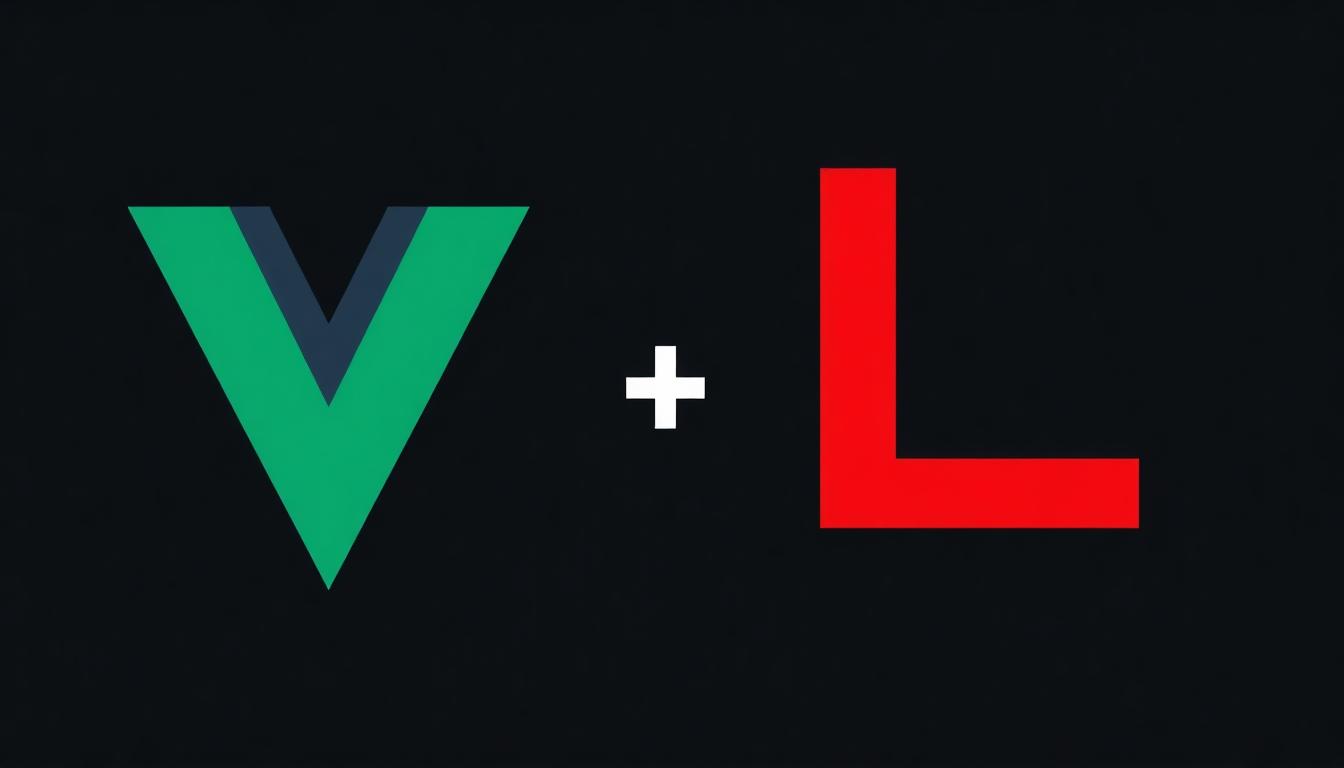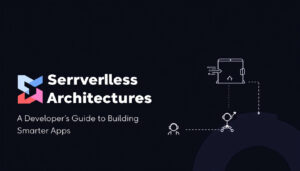Building modern e-commerce applications requires a careful balance between a responsive frontend and a robust backend. Vue3 offers a reactive and performant user interface experience, while Laravel 11 provides a powerful backend framework with enhanced features and security.
One key challenge in this architecture is managing Cross-Origin Resource Sharing (CORS), which controls how resources are shared between the frontend and backend hosted on different domains. Proper CORS configuration is essential to prevent common issues that can block API communication and disrupt user interactions.
This post will provide a clear outline of how to set up CORS when building e-commerce platforms using Vue3 and Laravel 11, ensuring efficient and secure API exchanges.
Overview of Vue3 for E-commerce Frontend Development
Vue3 is an efficient and modern framework that addresses many requirements of e-commerce frontend development. Its design allows developers to create high-performing, maintainable, and scalable applications—critical elements for online stores that must handle dynamic content and numerous user interactions. With improved reactivity, intuitive APIs, and strong TypeScript support, Vue3 helps maintain a smooth and responsive shopping experience. Below, we explore specific features and practices that make Vue3 well-suited for building e-commerce frontends.
Key Vue3 Features Relevant to E-commerce
Vue3 introduces a range of features that optimize frontend development for e-commerce applications by improving performance, flexibility, and developer experience:
- Composition API: This offers a powerful and flexible way to organize component logic, making code more reusable and easier to maintain. It enables better separation of concerns, which is essential when managing the complex interactions in an online store, such as filtering products, tracking user input, or managing checkout flows.
- Teleport: Teleport allows developers to render components outside their parent DOM hierarchy. This is particularly useful for modals, dropdowns, or notification pop-ups, which need to appear above other content without being tightly coupled to their triggering component.
- Suspense: This feature improves handling of asynchronous operations by allowing components to wait on promises before rendering, enhancing perceived performance for users browsing product details or waiting for data-intensive operations like inventory checks.
- Improved TypeScript Support: Vue3 is built with TypeScript in mind, offering enhanced type inference and integration. This reduces bugs and improves code clarity, which is vital in e-commerce apps where strong typing helps manage complex data like user profiles, orders, and stock levels.
The combination of these features brings a clear advantage in building scalable and maintainable frontends that enhance user satisfaction and streamline development processes. For detailed insights on Vue3’s e-commerce capabilities, check out this article on why Vue.js is a great choice for building e-commerce stores.
Building Product Listings and Shopping Cart Components
Reusable components are the backbone of any e-commerce frontend. Vue3’s single-file components and Composition API encourage modular design, allowing product cards, shopping carts, and filters to be built cleanly and reused throughout the app.
For product listings:
- Create self-contained product card components that accept props like images, prices, and descriptions.
- Use slots to allow flexible content injection, such as badges for discounts or labels for new arrivals.
- Incorporate lazy loading images and efficient event handling to keep rendering fast.
For shopping carts:
- Develop cart components that reflect the current cart state dynamically.
- Separate UI components from business logic using the Composition API, improving maintainability.
- Ensure components are fully responsive to deliver a consistent experience across devices.
Emphasizing state management and responsive design ensures components interact smoothly with the application state and resize gracefully on mobile and desktop. Exploration of best practices for Vue composable design patterns can be found in resources like Good practices and Design Patterns for Vue Composables.

Photo by Shoper .pl
Vue3 State Management with Pinia for Cart and User Data
Pinia has become the recommended state management library for Vue3, offering a simple and scalable approach to managing application state, which is crucial for e-commerce applications where user data and cart contents change frequently.
Pinia’s strengths include:
- Modularity: Define multiple stores for cart data, user authentication, and UI preferences independently. This structure keeps the codebase organized and easier to debug.
- Reactivity: Pinia integrates naturally with Vue3’s reactive model, ensuring UI components update instantly when store data changes.
- TypeScript Friendly: Provides strong typings out of the box, reducing runtime errors related to state management.
- DevTools Integration: Debugging user actions like adding or removing cart items becomes straightforward, supporting better development and maintenance processes.
In practice, the cart store manages item quantities, total prices, and checkout readiness. Meanwhile, user stores handle login states and profile data. Efficiently coordinating these stores ensures smooth updating of UI states such as loading indicators or error messages.
For a comprehensive introduction and practical examples of Pinia in Vue3 applications, the official Pinia documentation at Pinia | The intuitive store for Vue.js is highly recommended.
Implementing Vue3 with Pinia offers a modern and effective way to handle application state, which is an essential part of building robust e-commerce apps combining Vue3 and Laravel 11 frameworks. For integrating frontend state management with backend services securely, understanding CORS setups in Laravel 11, as discussed in the previous sections, completes the full-stack workflow.
Laravel 11 as the Backend API for E-commerce
Laravel 11 offers a robust foundation for building backend APIs that power e-commerce applications. Its architecture supports clear separation of concerns, strong security features, and scalable design patterns to manage complex data and processes such as product catalogs, user accounts, and order management. Leveraging Laravel 11 ensures consistent and secure communication between your Vue3 frontend and the backend through well-structured API routes. Below, we explore key aspects of setting up Laravel 11 for e-commerce API development, managing security, and processing orders including payment integrations.
Setting Up Laravel 11 for E-commerce APIs
Initiating a Laravel 11 project for an e-commerce API begins with a clean installation using Composer. Once installed, configure your database connections in the .env file with relevant credentials to ensure seamless data handling.
Creating API resource routes organizes your backend endpoints. Laravel’s resource routing simplifies managing CRUD operations for primary entities:
- Products: Define routes to list products, show details, create new items, update inventories, and delete obsolete products.
- Users: Include registration, login, profile management, and role-based access for customers and admins.
- Orders: Handle creation, status updates, viewing order history, and cancellations.
These routes use controllers that handle business logic, validated inputs, and return JSON responses optimized for frontend consumption. When building such APIs, using Laravel’s API resources enhances consistency in formatting the output data.
Starting your Laravel project and configuring this structure offers a reliable baseline for a maintainable e-commerce backend. For developers seeking detailed tutorials, resources like Mastering PHP Laravel 11 API Development cover these topics extensively.
Implementing Secure Authentication in Laravel 11
Protecting sensitive user data is critical in e-commerce systems. Laravel 11 provides reliable options for API token authentication, most notably Sanctum and Passport.
- Laravel Sanctum offers a simple solution for issuing API tokens without the complexity of OAuth. It works well for SPAs (Single Page Applications) like Vue3 frontends. Sanctum supports token abilities that restrict access to specific resources, improving security.
- Laravel Passport uses OAuth2 standards, suitable for applications requiring more robust OAuth flows, such as third-party integrations. Passport provides advanced features like refresh tokens and scopes.
Both packages include middleware that secures routes, ensuring only authenticated requests access sensitive endpoints. Implementing either solution helps protect user identities, orders, and transaction data from unauthorized access or interception. Laravel’s built-in safeguards against common threats like CSRF and XSS complement these authentication methods for comprehensive security.
Exploring Laravel’s official documentation or guides such as Laravel 11 API Design: From Beginner to Advanced can clarify the best approach based on application needs.
Order Management and Payment Gateway Integration
Efficiently managing orders is a core backend responsibility. Laravel makes tracking an order’s lifecycle straightforward:
- Order placement: Validate cart details, stock availability, and user info before creating the order record.
- Status updates: Transition orders through stages such as pending, processing, shipped, and delivered with event-driven notifications.
- History and reports: Provide customers and admins access to past orders for transparency, support, and analytics.
Integrating payment gateways securely is essential to processing transactions. Laravel supports common providers like Stripe, PayPal, and Authorize.Net through packages and SDKs. These integrations handle payment authorization, capture, refunds, and webhook notifications.
Key considerations during integration include:
- Using HTTPS endpoints to encrypt communication.
- Securing API keys and secrets using environment variables.
- Validating payment responses to prevent fraudulent activities.
- Handling edge cases like failed payments or cancellations cleanly.
Such careful handling maintains trust and legal compliance while creating a smooth checkout experience.

Photo by Markus Spiske
For a close look at establishing secure API endpoints for Laravel-based e-commerce projects, consider integrating insights from this detailed tutorial on Laravel 11 API development. Combining solid authentication with order processing logic creates a backend that supports a robust and secure shopping environment.
By following best practices in setting up Laravel 11 APIs, implementing authentication, and managing payments, developers can build e-commerce backends that reliably support the demands of modern online retail platforms. For a practical guide on connecting this with frontend practices, you can review the earlier sections covering Vue3 and CORS configuration.
Configuring and Managing CORS in Laravel 11 for E-commerce APIs
Cross-Origin Resource Sharing (CORS) is essential when your Vue3 frontend communicates with a Laravel 11 backend, especially in an e-commerce environment where APIs play a key role in delivering real-time data such as product details, user authentication, and order processing. Misconfigured CORS can prevent the frontend from accessing backend resources, causing disruptions that directly affect the shopping experience. Understanding CORS’s role and applying precise configurations ensures smooth API transactions, which is fundamental for maintaining reliability and user trust.
Understanding CORS and Its Challenges in E-commerce Apps
CORS is a security mechanism managed by browsers to control how resources from one origin (domain) can be accessed by another. It helps prevent malicious websites from making unauthorized requests to your backend API. When a Vue3 frontend served from a different domain interacts with a Laravel 11 API, browsers enforce CORS policies to restrict non-permitted access.
The main challenges in this setup often include:
- Blocked requests due to missing headers: If the backend does not explicitly allow the frontend’s origin, browsers block access.
- Preflight request handling: Browsers send an OPTIONS request before the actual request to verify permissions. Incorrect handling can cause failures, especially with complex requests.
- Mismatch in allowed HTTP methods or headers: These must align with frontend requests, otherwise browsers refuse communication.
- Issues with credentials: When cookies or authentication tokens are involved, CORS settings must explicitly permit sending credentials.
These issues commonly arise in e-commerce apps where frontend and backend are hosted on different domains or ports. For example, an API call to fetch user cart data from a Vue3 app will fail if the Laravel backend does not respond with proper CORS headers. Understanding these fundamentals is critical before moving on to configuring your Laravel API.
Implementing CORS Middleware in Laravel 11
Laravel 11 provides a straightforward approach to manage CORS via its built-in middleware. The key steps to enable and configure CORS are:
- Publish the CORS configuration file
Use the Artisan command to publish the defaultcors.phpconfig file, which allows customization:php artisan vendor:publish --tag=cors-config - Configure Allowed Origins
Inconfig/cors.php, update thepathsoption to define which routes require CORS. For example:'paths' => ['api/*', 'sanctum/csrf-cookie'],Set theallowed_originsto include your Vue3 frontend URL(s), such as:'allowed_origins' => ['https://your-vue3-store.com'], - Set Allowed Methods and Headers
Define which HTTP methods your API will accept from the frontend:'allowed_methods' => ['GET', 'POST', 'PUT', 'DELETE', 'OPTIONS'],Configure headers as needed by your requests, typically:'allowed_headers' => ['Content-Type', 'X-Requested-With', 'Authorization', 'Accept'], - Enable Credentials if Applicable
If your app requires sending cookies or tokens, make sure to enable credentials:'supports_credentials' => true, - Clear Configuration Cache
After changes, clear Laravel’s cache to apply the new settings:php artisan config:clear
This setup ensures your Laravel backend explicitly authorizes Vue3 frontend requests with the correct domain, methods, headers, and credentials.
For further details and troubleshooting, the discussion on Laravel CORS issues provides insights from developer experiences fixing similar challenges.
Testing and Debugging CORS Issues Effectively
Testing your CORS settings both locally and in production is important to prevent interruptions in the user experience. Implement these best practices:
- Use browser developer tools: The Network tab reveals CORS errors and preflight request responses. Look for missing
Access-Control-Allow-Originheaders. - Test with correct origins: When developing locally, use the same domain and port settings or configure local URLs in
allowed_origins. Tools like ngrok can expose local servers to test external URLs. - Check preflight requests: Some HTTP requests trigger OPTIONS preflight checks. Ensure your Laravel app handles these correctly and responds with appropriate CORS headers.
- Review server logs: Backend logs can reveal if middleware is blocking or misconfiguring requests.
- Test authentication flows: For APIs using Laravel Sanctum or Passport, verify that credentials and tokens are sent and accepted properly with CORS enabled.
- Clear caches and browser storage: Sometimes outdated caches or stored credentials interfere with testing.
When debugging, consider tools like How to Resolve CORS Issues in Laravel and Vue.js Applications for practical step-by-step guidance.
CORS problems cause silent failures that disrupt API communication without clear backend errors. Testing thoroughly at each stage ensures your e-commerce app remains functional and responsive across environments.

Photo by Pixabay
For a detailed overview on integrating Laravel with Vue3, relevant sections of Laravel 11 as the Backend API for E-commerce provide additional context on secure API communication and authentication.
Best Practices and Optimization Tips for Vue3 and Laravel 11 E-commerce Apps
When building e-commerce applications with Vue3 and Laravel 11, applying effective best practices around performance, security, and maintainability is crucial for delivering a smooth user experience and a durable codebase. This section focuses on key strategies to optimize app responsiveness, protect sensitive data, and design for scalability. These practices help you build an e-commerce platform that performs well under real-world conditions while remaining easy to update and extend.
Performance Optimization Techniques
Optimizing performance is essential to keep users engaged and reduce bounce rates in e-commerce applications. Both Vue3 on the frontend and Laravel 11 on the backend provide tools and patterns that enhance speed and efficiency.
- Lazy Loading Components in Vue3
Load components only when they are needed instead of on initial page load. Vue3 supports dynamic imports and asynchronous components, which reduce bundle size and speed up initial rendering. For example, product details, reviews, or promotional banners can be lazy loaded as users navigate. - Code Splitting with Vue3
Break your frontend code into smaller chunks. Modern bundlers like Vite or Webpack allow you to split code by route or feature, delivering only the required JavaScript for the current page. This shortens load times and decreases the time to interactivity. - Query Optimization in Laravel
Efficient database queries dramatically affect backend performance. Use eager loading (with()method) to prevent the N+1 query problem when fetching products and related data. Utilize Laravel’s query builder and caching solutions (such as Redis) to limit database load and speed up frequent queries. - Additional Tips
- Minimize HTTP requests by combining assets and optimizing images.
- Use Laravel queues for time-consuming tasks like sending emails or processing payments asynchronously.
These measures together enhance app responsiveness, resulting in a faster, more seamless shopping experience for users. For more guidance on Vue3 performance, Optimizing heavy operations in Vue with Web Workers offers practical insights. By balancing frontend and backend techniques, you ensure your e-commerce platform remains quick and reliable.
Security Best Practices
Security in e-commerce systems cannot be overstated; protecting user data and payments is critical for trust and compliance.
- Data Validation
Always validate incoming data on the server side using Laravel’s validation rules. Never trust client input, as it can be manipulated. Use strict type checks and constraints to avoid malformed or malicious data entering your system. - Preventing SQL Injection
Laravel’s Eloquent ORM and query builder use prepared statements by default, which are effective in preventing SQL injection attacks. Avoid raw queries unless absolutely necessary and sanitize inputs when doing so. - Cross-Site Scripting (XSS) Protection
Use Laravel’s built-in Blade templating engine’s escaping features to prevent reflected XSS in server-rendered views. For Vue3 templates, bind dynamically rendered HTML safely withv-htmlonly when you sanitize the content thoroughly. - Secure Handling of Payment Data
Never store sensitive payment information on your servers. Rely on trusted payment gateways like Stripe or PayPal to handle card data. Ensure all API communication related to payments is done over HTTPS. Use environment variables to store API keys securely and limit access through roles and scopes in your Laravel backend.
These security measures align with best practices outlined in industry resources such as Top 10 Laravel Security Best Practices To Protect PHP Apps. Implementing them reduces vulnerabilities and safeguards both your business and customers.
Ensuring Maintainability and Scalability
Building an e-commerce app is not just about launching fast; it’s about maintaining and growing the platform efficiently over time.
- Modular Code Structure
Organize Vue3 components and Laravel backend code into modules based on features or domains. This separation simplifies debugging and allows teams to work on independent parts without conflicts. - API Versioning
E-commerce APIs evolve with new features or changes. Implement API versioning in Laravel routes to maintain backward compatibility. This approach prevents breaking existing integrations as your application grows. - Efficient State Management
Vue3’s Pinia library provides a simple and scalable way to handle app state, especially for cart contents, user sessions, and product filters. Proper use of stores helps avoid prop drilling, reduces bugs, and improves reactivity. - Scalable Database Design
Normalize data but avoid over-complex joins. Use indexing strategically to speed up queries. Plan for scaling out by considering database replication or sharding for large data sets.
Adopting these architectural best practices prepares your app for future growth and complexity. A useful reference is Building Scalable eCommerce Websites with Laravel and Vue.js, which discusses design choices aligned with maintainability and performance.

Photo by Julio Lopez
These insights, combined with earlier discussions on CORS and authentication, form a solid foundation for building robust, efficient, and secure Vue3 and Laravel 11 e-commerce applications. For additional information on secure app development workflows involving middleware and state management, consider this secure Vue Apps with Laravel 11 middleware guide.
Real-World Example: Building a Simple Vue3 and Laravel 11 E-commerce App
To illustrate how Vue3 and Laravel 11 work together in a practical setting, this section presents a straightforward project example. It covers setting up your development environment, creating the necessary API endpoints and frontend components, and integrating CORS for smooth communication between frontend and backend. This hands-on approach offers clarity on implementing a basic e-commerce app using current versions of both frameworks.
Project Setup and Initial Configuration
Starting a new project requires creating both the Vue3 frontend and the Laravel 11 backend, installing dependencies, and setting up environment variables to manage configuration securely.
- Creating the Vue3 Project
- Use the Vue CLI or Vite to scaffold the project. For example, with Vite:
npm create vite@latest ecommerce-vue3 -- --template vue cd ecommerce-vue3 npm install - This generates a Vue3 app ready for development.
- Use the Vue CLI or Vite to scaffold the project. For example, with Vite:
- Setting Up Laravel 11 Backend
- Initialize a fresh Laravel project via Composer:
composer create-project laravel/laravel ecommerce-backend cd ecommerce-backend - Configure the database connection in
.env:DB_CONNECTION=mysql DB_HOST=127.0.0.1 DB_PORT=3306 DB_DATABASE=ecommerce_db DB_USERNAME=root DB_PASSWORD=your_password
- Initialize a fresh Laravel project via Composer:
- Installing Dependencies
- Install Laravel Sanctum for API authentication if needed:
composer require laravel/sanctum php artisan vendor:publish --provider="Laravel\Sanctum\SanctumServiceProvider" php artisan migrate - On the Vue3 side, add Axios for HTTP requests:
npm install axios
- Install Laravel Sanctum for API authentication if needed:
- Configuring Environment Variables
- For Laravel, critical configurations such as API URLs, database access, and CORS origins go into
.env. - In Vue3, add a
.envfile with the backend API URL:VITE_API_URL=http://localhost:8000/api
- For Laravel, critical configurations such as API URLs, database access, and CORS origins go into
This setup provides a clean slate to build and test an e-commerce platform with separated frontend and backend concerns, preparing for smooth frontend-backend interactions.
Creating API Endpoints and Vue3 Components
The next step involves defining Laravel API endpoints to manage products and a simple shopping cart, alongside building Vue3 components to display products and handle cart interactions.
Laravel API Endpoints
In the Laravel backend, create routes and controllers:
- Define routes in
routes/api.php:use App\Http\Controllers\ProductController; use App\Http\Controllers\CartController; Route::get('/products', [ProductController::class, 'index']); Route::post('/cart', [CartController::class, 'add']); Route::get('/cart', [CartController::class, 'show']); - Example ProductController method to return all products:
namespace App\Http\Controllers; use App\Models\Product; use Illuminate\Http\JsonResponse; class ProductController extends Controller { public function index(): JsonResponse { $products = Product::all(); return response()->json($products); } }
Vue3 Components
- Create a
ProductList.vuecomponent:<template> <div> <div v-for="product in products" :key="product.id" class="product-item"> <h3>{{ product.name }}</h3> <p>{{ product.description }}</p> <p>\${{ product.price }}</p> <button @click="addToCart(product)">Add to Cart</button> </div> </div> </template> <script setup> import { ref, onMounted } from 'vue'; import axios from 'axios'; const products = ref([]); onMounted(async () => { const response = await axios.get(import.meta.env.VITE_API_URL + '/products'); products.value = response.data; }); function addToCart(product) { axios.post(import.meta.env.VITE_API_URL + '/cart', { product_id: product.id }); } </script> - Create a
Cart.vuecomponent to display cart contents:<template> <div> <h2>Your Cart</h2> <ul> <li v-for="item in cartItems" :key="item.id"> {{ item.name }} - Quantity: {{ item.quantity }} </li> </ul> </div> </template> <script setup> import { ref, onMounted } from 'vue'; import axios from 'axios'; const cartItems = ref([]); onMounted(async () => { const response = await axios.get(import.meta.env.VITE_API_URL + '/cart'); cartItems.value = response.data.items; }); </script>
These examples demonstrate essential API interaction and frontend rendering to handle product browsing and cart management.
Integrating CORS and Testing the Application
Smooth API communication requires configuring CORS in Laravel 11 to permit the Vue3 frontend’s requests and enable session handling if necessary.
- Configure CORS in Laravel
Updateconfig/cors.phpto allow your Vue3 app’s origin:'paths' => ['api/*'], 'allowed_origins' => ['http://localhost:5173'], // Default port for Vite dev server 'allowed_methods' => ['*'], 'allowed_headers' => ['*'], 'supports_credentials' => true, - Middleware Activation
Laravel applies CORS middleware automatically to API routes once set, but verify inapp/Http/Kernel.phpthe inclusion of\Fruitcake\Cors\HandleCors::classin the API middleware group. - Testing Workflow
- Run Laravel with Artisan:
php artisan serve - Start the Vue3 development server:
npm run dev - Access the Vue3 app in a browser, browse products, add items to the cart, and verify that no CORS errors appear in the developer console.
- Inspect API calls to confirm correct headers and responses.
- Run Laravel with Artisan:
Testing should include checking both GET and POST requests and attempting to send authentication credentials if your app manages sessions or tokens. This ensures that the CORS configuration successfully supports the app’s full functionality.

Photo by Nataliya Vaitkevich
This practical example highlights the critical steps to bring Vue3 and Laravel 11 together in an e-commerce context. For further guidance on integrating frontend and backend securely, explore detailed tutorials like this building a Vue.js 3 and Laravel 11 e-commerce website course.
Conclusion
Building e-commerce applications with Vue3 and Laravel 11 delivers a strong combination of a reactive frontend and a secure, scalable backend. Vue3 enhances user experience through efficient state management and component reuse, while Laravel 11 offers robust API development, authentication, and order processing tools. Proper CORS configuration in Laravel is critical to maintain smooth and secure communication between the frontend and backend, avoiding common issues that block API requests. Following best practices in performance, security, and maintainability will help create a reliable platform capable of supporting growth and evolving business needs. Developers are encouraged to apply these principles conscientiously to deliver a functional and trustworthy e-commerce solution.









